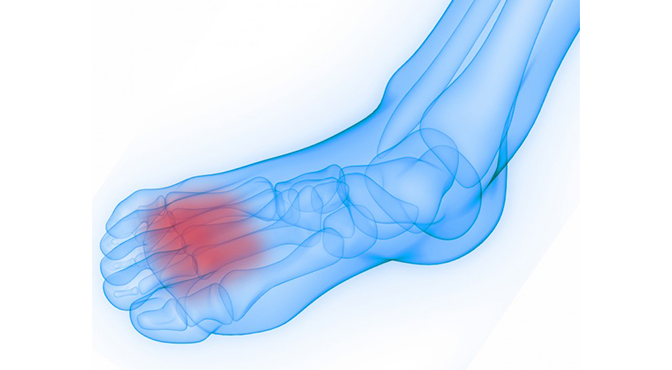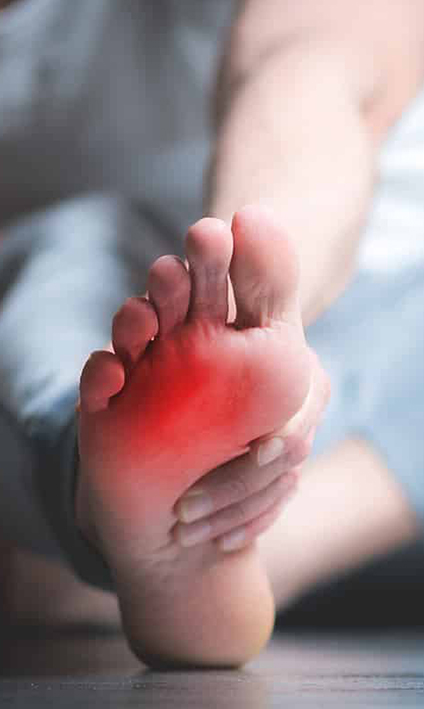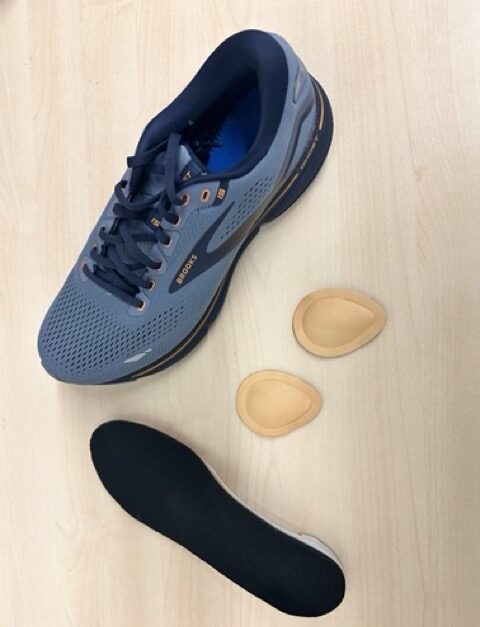METATARSALGIA
Overview
Metatarsalgia is a generalized term used to describe pain that has developed in the ball of the foot. It is essentially an irritation of the metatarsal region. Athletes engaged in sports that require sustained running and jumping may be more susceptible because they load the metatarsals with a high force load. Individuals in careers with many hours of walking can also frequently develop this irritation due to increased forefoot loading.
Foot characteristics such as higher more rigid arches along with collapsed metatarsal arches are thought to increase localized pressure to the metatarsals and increase the incidence of this irritation.







